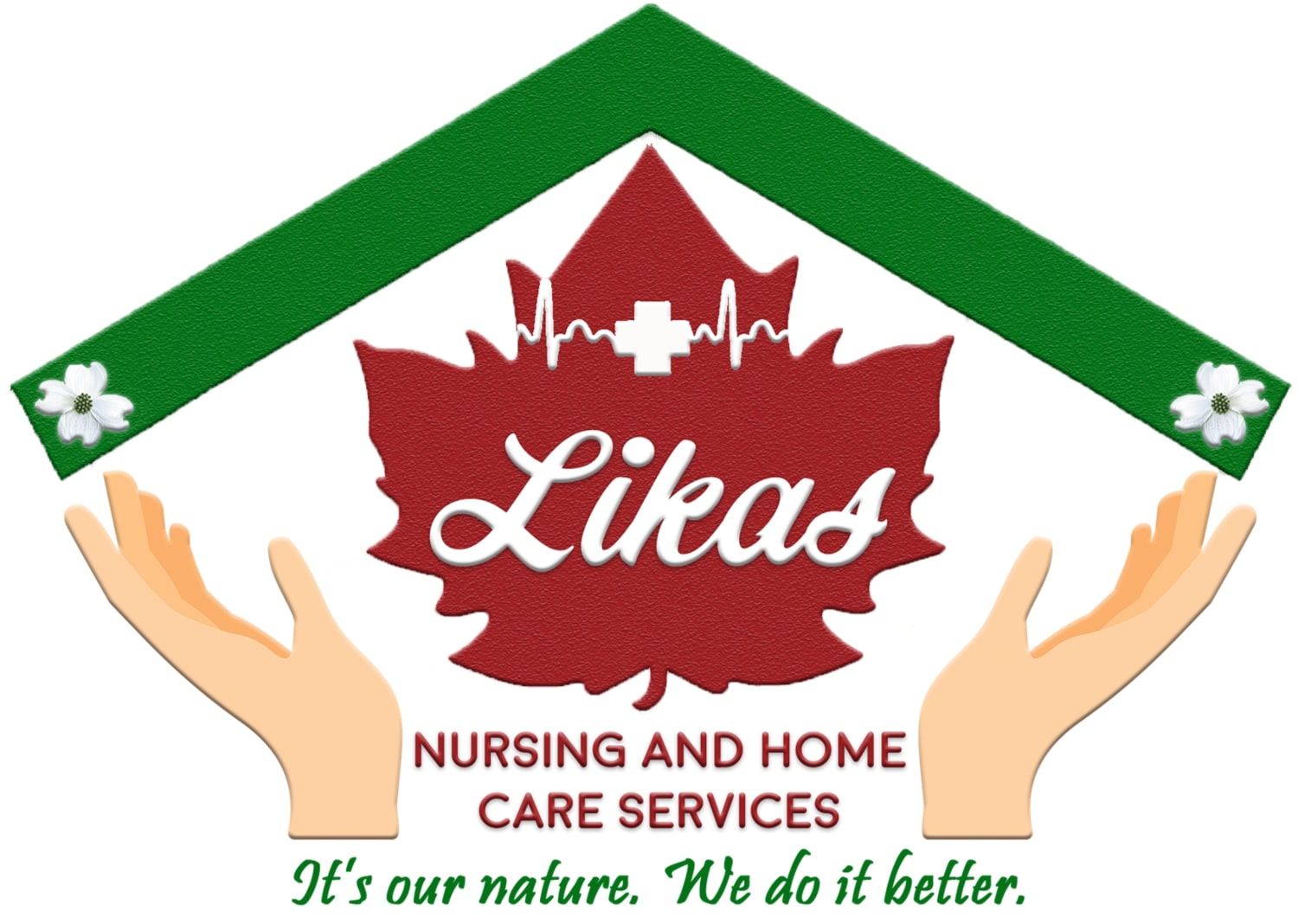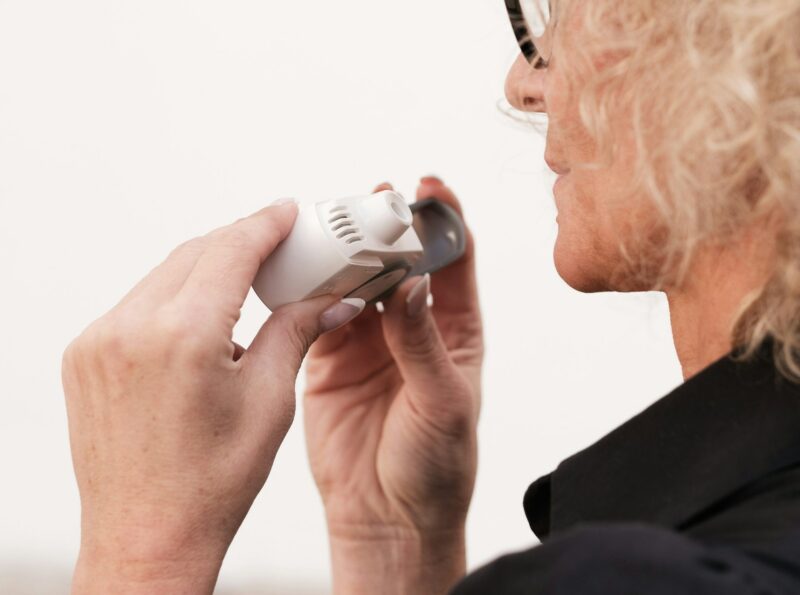
Respiratory diseases are a major concern for the elderly. As we age, our lungs become more vulnerable. Conditions like chronic obstructive pulmonary disease (COPD), pneumonia, and asthma can lead to serious health issues. Many older adults face increased risks due to weakened immune systems and pre-existing conditions.
It’s crucial to understand these diseases and their impact on daily life. Awareness helps in prevention and management. With the right knowledge, caregivers can provide better support. This post will explore the most concerning respiratory diseases affecting seniors and offer insights into prevention and care strategies. Knowledge is power when it comes to health.
Overview of Respiratory Health in Seniors
Increased Vulnerability
Seniors face a higher risk of respiratory diseases. Age-related changes affect their lungs and airways. As people age, their lung tissue can lose elasticity. This makes it harder for the air sacs to expand and contract properly. The body’s ability to fight infections also decreases. This leads to a greater chance of developing conditions like pneumonia or bronchitis.
Chronic illnesses such as heart disease or diabetes can worsen respiratory health. These conditions often overlap with lung issues. For instance, a senior with heart disease might struggle more with breathing problems. Regular monitoring is essential for this age group.
Importance of Health Check-ups
Regular health check-ups are crucial for seniors. Early detection of respiratory issues can make a significant difference. Doctors can identify problems before they become severe. They can perform tests like spirometry to measure lung function. These assessments help track any changes over time.
Seniors should also report any breathing difficulties to their healthcare provider. Symptoms like shortness of breath or persistent cough may indicate underlying issues. Addressing these symptoms early can lead to better treatment outcomes.
Role in Overall Well-being
Respiratory health plays a vital role in overall well-being for seniors. Good breathing contributes to better oxygen levels in the body. This supports all bodily functions, including energy levels and mental clarity. Poor respiratory health can limit physical activity, leading to decreased quality of life.
Engaging in light exercise can improve lung function and endurance. Activities like walking or gentle yoga can enhance breathing capacity. Social interactions during these activities also boost emotional health.
Maintaining good respiratory health should be a priority for seniors. Simple lifestyle changes can have a positive impact. Quitting smoking, avoiding pollutants, and staying active are key strategies.
In summary, understanding the importance of respiratory health is essential for seniors. They must recognize their increased vulnerability to diseases related to breathing. Regular check-ups will aid in early detection and management of potential issues. Ultimately, maintaining healthy lungs enhances overall quality of life for older adults.
Common Respiratory Diseases in Elderly
Asthma
Asthma is a common respiratory disease in elderly individuals. It involves inflammation of the airways, leading to wheezing and shortness of breath. Symptoms can worsen due to allergens or respiratory infections. Many seniors may not recognize their asthma symptoms right away. This delay can lead to severe complications.
COPD
Chronic Obstructive Pulmonary Disease (COPD) affects many older adults. This condition includes chronic bronchitis and emphysema. Both are types of chronic lung diseases that cause breathing difficulties. COPD often results from long-term exposure to irritants like smoke or pollution. The disease can also worsen existing health issues, such as heart disease.
Lung Cancer
Lung cancer is another serious concern for seniors. It is one of the leading causes of cancer-related deaths among older adults. Smoking is the primary risk factor, but non-smokers can also develop this disease. Early detection is crucial for effective treatment options.
Complications from Chronic Respiratory Diseases
Chronic respiratory disorders can complicate other health conditions in older adults. For example, seniors with diabetes may find it harder to manage their blood sugar levels if they have a lung condition. Similarly, heart problems can become more pronounced when a person has pulmonary diseases.
These complications arise because the body struggles to supply enough oxygen during physical activities. This difficulty can lead to fatigue and decreased mobility. Seniors must be aware of how these respiratory conditions interact with their overall health.
Importance of Recognizing Symptoms
Recognizing early symptoms of respiratory diseases is vital for timely intervention. Symptoms like persistent cough, wheezing, or increased breathlessness should not be ignored. Early diagnosis can lead to better management of pulmonary diseases and improve quality of life.
Seniors and caregivers should monitor any changes in breathing patterns closely. Regular check-ups with healthcare providers can help identify potential issues before they worsen.
Management Strategies
Effective management strategies are essential for those living with chronic lung conditions. These strategies include medication adherence, avoiding triggers, and engaging in pulmonary rehabilitation programs. Such programs focus on improving lung function through exercise and education.
Maintaining a healthy lifestyle plays a key role in managing respiratory symptoms. Proper nutrition, regular exercise, and avoiding smoking can significantly impact lung health.
Understanding COPD and Asthma
COPD Overview
Chronic Obstructive Pulmonary Disease (COPD) is a term used for a group of lung diseases. It primarily includes emphysema and chronic bronchitis. Symptoms include shortness of breath, chronic cough, and increased mucus production. These symptoms often worsen over time.
Treatment for COPD usually involves bronchodilators and steroids. Patients may also require oxygen therapy as the disease progresses. Regular check-ups help monitor lung function.
Asthma Basics
Asthma is an inflammatory condition affecting the airways. Common symptoms include wheezing, chest tightness, and coughing, especially at night. Asthma can be triggered by allergens, cold air, or exercise.
Management often includes inhalers that deliver medication directly to the lungs. Long-term control medications help reduce inflammation. Quick-relief inhalers are useful during an asthma attack.
Differences in Symptoms
COPD and asthma have overlapping symptoms but differ in some key aspects. COPD symptoms tend to be more persistent and worsen over time, while asthma symptoms can vary greatly from day to day.
For instance, COPD patients often experience a consistent pattern of shortness of breath, while those with asthma might only have symptoms during specific triggers or times of the year.
Coexistence of Conditions
Many seniors face both COPD and asthma at the same time. The presence of both conditions complicates diagnosis and management. Doctors may find it challenging to distinguish between them based on symptoms alone.
This overlap can lead to misdiagnosis or under-treatment of one condition. For example, if a doctor focuses solely on treating asthma, they might overlook critical aspects of managing COPD.
Importance of Personalized Treatment
Creating personalized treatment plans is essential for managing these chronic conditions effectively. Each patient has unique needs based on their health status, lifestyle, and severity of symptoms.
A tailored approach may involve combining medications for both COPD and asthma. Monitoring triggers and adjusting treatment accordingly enhances overall management.
Regular consultations with healthcare providers ensure that treatments remain effective as conditions change over time. This proactive approach helps improve quality of life for seniors dealing with respiratory diseases.
Risks of Pneumonia and Lung Cancer
Pneumonia Risks
Seniors face a heightened risk of pneumonia. This condition can follow respiratory infections, like colds or flu. The immune system weakens with age. As a result, older adults may struggle to fight off these infections.
Pneumonia is especially dangerous for those with chronic lung diseases, such as COPD or asthma. It can lead to frequent lung infections. These infections may cause severe complications. Hospitalization rates increase significantly among the elderly due to pneumonia.
The symptoms of pneumonia include cough, fever, and chest pain. Early detection is crucial for effective treatment. Seniors should seek medical attention if they experience these symptoms.
Lung Cancer Connection
Smoking is a leading cause of lung cancer. The risk increases with age. Tobacco smoke contains harmful chemicals that damage lung health. Even secondhand smoke can pose risks to non-smokers.
Prevention strategies are essential for reducing this risk. Quitting smoking can greatly lower the chances of developing lung cancer. Support programs and resources are available for those who want to quit.
Regular check-ups can help identify potential problems early on. Doctors often recommend screening for high-risk individuals, particularly smokers over 55 years old.
Awareness of Symptoms
Awareness of lung cancer symptoms is vital for early detection. Common signs include persistent cough, unexplained weight loss, and changes in breathing patterns. Seniors must pay attention to these changes.
Early diagnosis improves treatment options and outcomes. Regular discussions with healthcare providers about lung health are important. They can provide guidance on risk factors and necessary screenings.
Education about environmental hazards also plays a role in prevention. Exposure to asbestos, airborne particulates, and other pollutants can increase lung cancer risk. Awareness can lead to better choices regarding living conditions and occupational safety.
Overall, understanding the risks associated with pneumonia and lung cancer is crucial for seniors. Taking proactive steps can improve health outcomes significantly.
Insights into Interstitial Lung Disease
Definition and Impact
Interstitial lung disease (ILD) refers to a group of disorders that cause inflammation and scarring in the lungs. This affects the alveoli, which are tiny air sacs where oxygen exchange occurs. As the lung tissue becomes scarred, it leads to reduced lung function. For the elderly, this can result in significant breathing difficulties. The condition can worsen over time, leading to chronic lung disease. Seniors may find simple activities, like walking, increasingly challenging.
Diagnosis Challenges
Diagnosing interstitial lung diseases poses unique challenges. Symptoms often overlap with other conditions such as asthma or chronic obstructive pulmonary disease (COPD). Common symptoms include shortness of breath and a persistent cough. These similarities can lead to misdiagnosis. Doctors may need advanced imaging tests and lung biopsies to confirm ILD. This complex process can delay treatment for seniors who may already be dealing with multiple health issues.
Research and Support
Research into interstitial lung diseases is crucial. Current treatments focus on managing symptoms rather than curing the disease. More studies are necessary to find effective therapies that target the underlying causes of ILD. Improved treatment options could significantly enhance the quality of life for affected seniors.
Support systems also play a vital role in managing this condition. Programs that educate patients about their disease can empower them to make informed decisions about their care. Community resources, including support groups, offer emotional assistance. These networks provide a space for seniors to share experiences and coping strategies.
Occupational Lung Diseases
e cases of interstitial lung disease stem from occupational exposure. Workers in industries like construction or agriculture may face risks due to inhaling harmful substances over time. Awareness of these risks is essential for prevention. Regular health check-ups can help detect early signs of lung damage in older adults who have worked in high-risk jobs.
Impact of Age on Lung Function
Lung Aging
Lung function naturally declines with age. This decline starts as early as the late 20s and continues throughout life. By the time a person reaches their 70s or 80s, lung capacity can decrease significantly. The structure of the lungs changes over time. Elasticity reduces, making it harder to breathe deeply. Air sacs in the lungs may also lose shape, which limits oxygen exchange.
Older adults often experience a decrease in respiratory muscle strength. This change makes it harder for them to take deep breaths. As a result, they may feel short of breath during daily activities. Conditions like chronic obstructive pulmonary disease (COPD) become more common in this age group. These diseases can worsen lung aging effects.
Physical Activity
Maintaining physical activity is crucial for seniors. Regular exercise helps support lung capacity and overall health. Aerobic activities, such as walking or swimming, improve oxygen flow in the body. These exercises strengthen respiratory muscles too.
Studies show that active seniors have better lung function than those who are inactive. Engaging in physical activity can slow down the decline of lung capacity. It also helps maintain a healthy weight, reducing strain on the lungs. Simple exercises, such as stretching or light yoga, can be beneficial as well.
Monitoring Lung Health
Monitoring lung health is essential in routine geriatric care. Regular check-ups allow healthcare providers to track lung function over time. Tests like spirometry measure how much air a person can exhale and how quickly. Early detection of issues enables timely interventions.
Healthcare providers should discuss respiratory health with elderly patients regularly. They can recommend lifestyle changes or medications if needed. Education about recognizing symptoms of lung diseases is vital too. Seniors should understand when to seek help for breathing problems.
Lifestyle and Environmental Factors
Smoking Effects
Smoking is a leading cause of respiratory diseases in older adults. It damages lung tissue and reduces lung function over time. Many seniors who smoked in their youth face severe health issues later. Conditions like chronic obstructive pulmonary disease (COPD) and emphysema are common among them. Quitting smoking can significantly improve lung health.
Diet Impact
Diet plays a crucial role in respiratory health. A balanced diet rich in fruits, vegetables, and whole grains can strengthen the immune system. Nutrients like vitamin C and omega-3 fatty acids help reduce inflammation in the lungs. Poor dietary choices may lead to obesity, which can worsen respiratory conditions. Maintaining a healthy weight is essential for better lung function.
Pollution Concerns
Air pollution is a significant environmental factor affecting seniors. Exposure to contaminants like smoke, dust, and chemicals can lead to serious health problems. Polluted air can exacerbate existing conditions such as asthma and bronchitis. Studies show that long-term exposure increases the risk of developing lung diseases.
Allergens Role
Allergens also impact respiratory health in the elderly. Common allergens include pollen, mold, and pet dander. These substances can trigger asthma attacks or allergic reactions. Older adults with weakened immune systems are more susceptible to these effects. Reducing exposure to allergens can help manage symptoms.
Genetic Factors
Genetics can influence respiratory conditions too. Some people may have a family history of lung diseases like tuberculosis or asthma. This genetic predisposition can make them more vulnerable as they age. Understanding one’s family history can guide preventive measures.
Activity Levels
Physical activity is vital for maintaining lung health in seniors. Regular exercise improves overall fitness and lung capacity. Activities like walking or swimming help strengthen respiratory muscles. Sedentary lifestyles can lead to decreased lung function over time. Encouraging daily movement can greatly benefit elderly individuals.
Healthier Habits
Adopting healthier habits is essential for reducing risks associated with respiratory diseases. Seniors should avoid smoking and limit exposure to pollutants and allergens. Eating a nutritious diet and staying active also contribute positively to lung health. Engaging in regular check-ups helps catch any issues early.
Importance of Prevention and Vaccination
Role of Vaccinations
Vaccinations play a critical role in preventing respiratory diseases, especially for the elderly. The flu vaccine is essential. It reduces the risk of severe illness from influenza. According to the CDC, seniors who receive the flu shot lower their chances of hospitalization by 40% to 60%.
Pneumonia shots are equally important. They protect against infections like pneumococcal pneumonia. This disease can be deadly for older adults. The CDC recommends that those over 65 get vaccinated for pneumonia at least once. These vaccines can significantly decrease the incidence of serious respiratory infections.
Regular Health Screenings
Regular health screenings help identify potential respiratory issues early. Many seniors may not realize they have underlying conditions until symptoms worsen. Routine check-ups can catch problems like chronic obstructive pulmonary disease (COPD) or asthma before they escalate.
Healthcare providers can perform lung function tests during these screenings. They assess how well lungs are working. Early detection allows for timely treatment, which can improve quality of life. Seniors should discuss their respiratory health with their doctors regularly.
Education on Preventive Measures
Education on preventive measures enhances respiratory health among older adults. Understanding how to avoid infections is crucial. Seniors should practice good hygiene, such as washing hands frequently and avoiding close contact with sick individuals.
Staying active also promotes lung health. Regular exercise strengthens respiratory muscles and improves overall lung function. Activities like walking or swimming can be beneficial.
Moreover, seniors should be aware of environmental factors that can affect their respiratory health. For example, exposure to smoke or pollutants can worsen existing conditions. Creating a healthy living environment is essential for maintaining good respiratory health.
Need for Awareness
Awareness about respiratory diseases is vital for the elderly population. Many may underestimate the severity of these illnesses. Increased knowledge leads to better prevention strategies.
Seniors should prioritize vaccinations and regular health check-ups. They must also stay informed about symptoms that require medical attention. This proactive approach can save lives.
Effective Management and Treatment Options
Treatment Options
Multiple treatment options exist for managing chronic respiratory diseases in seniors. Medications play a crucial role. Inhalers, nebulizers, and oral medications help control symptoms. For instance, corticosteroids reduce inflammation in conditions like asthma. Long-acting bronchodilators help open airways and improve breathing.
Oxygen therapy is another option for those with severe lung disease. This therapy provides extra oxygen to improve oxygen levels in the blood. Pulmonary rehabilitation programs also offer valuable support. These programs combine exercise, education, and breathing techniques tailored for elderly patients.
Importance of Adherence
Adherence to prescribed medications is vital for effective management. Many seniors struggle with complex medication regimens. They may forget doses or misunderstand instructions. This can lead to worsening symptoms or hospitalizations.
Regular monitoring helps ensure adherence. Healthcare providers should schedule follow-up appointments to review medications. Patients must communicate any side effects or difficulties they encounter. This dialogue fosters a better understanding of their treatment plan.
Collaboration with Healthcare Providers
Collaboration between healthcare providers and patients enhances respiratory health management. Open communication builds trust and encourages active participation from patients. They should feel empowered to ask questions about their care plans.
Care teams often include doctors, nurses, and respiratory therapists. Each member plays a specific role in managing respiratory diseases. Together, they create personalized care plans that address individual needs.
Seniors benefit from educational resources as well. Understanding their condition helps them make informed decisions about their health. Caregivers can also play a significant role in supporting treatment adherence.
Home Care Strategies
Home care strategies are essential for managing respiratory diseases effectively. Maintaining good indoor air quality is crucial. Seniors should avoid exposure to smoke, dust, and strong odors.
Regular cleaning can help reduce allergens in the home environment. Using air purifiers may also improve air quality indoors. Ensuring proper ventilation is important too.
Establishing a daily routine can aid in treatment adherence as well. Setting reminders for medication times can help seniors remember their doses. Incorporating breathing exercises into daily activities promotes lung health.
Time for Regular Check-ups
Regular check-ups are necessary for ongoing management of respiratory diseases. Routine assessments allow healthcare providers to adjust treatment plans as needed. These visits often include lung function tests to monitor disease progression.
Staying proactive about health can lead to better outcomes over the years. Seniors should prioritize their respiratory health just like any other aspect of their well-being.
Final Remarks
Understanding respiratory diseases in the elderly is crucial. You’ve learned about common issues like COPD, asthma, and pneumonia. These conditions can severely impact quality of life. Aging affects lung function, making awareness and prevention vital.
Take action now. Regular check-ups and vaccinations can save lives. Encourage your loved ones to adopt healthier lifestyles. Share this information with others to spread awareness. Together, you can make a difference in respiratory health for seniors. Stay informed, stay proactive, and prioritize well-being.
Frequently Asked Questions
What are the most common respiratory diseases affecting the elderly?
Common respiratory diseases in seniors include Chronic Obstructive Pulmonary Disease (COPD), asthma, pneumonia, and lung cancer. These conditions significantly impact health and quality of life.
How does aging affect lung function?
As people age, lung tissue loses elasticity, and airways may become narrower. This decline can lead to reduced lung capacity and increased susceptibility to respiratory diseases.
Why are seniors at higher risk for pneumonia?
Elderly individuals often have weakened immune systems and underlying health issues. These factors make them more vulnerable to infections like pneumonia, which can be severe or even fatal.
What is the role of vaccination in respiratory health for seniors?
Vaccinations, such as the flu vaccine and pneumococcal vaccine, are crucial for seniors. They help prevent serious respiratory infections and complications, enhancing overall health and longevity.
How can lifestyle choices impact respiratory health in older adults?
Healthy lifestyle choices—like not smoking, regular exercise, and a balanced diet—can improve lung function and reduce the risk of respiratory diseases in seniors.
What are effective management options for COPD?
Management options for COPD include medications (like bronchodilators), pulmonary rehabilitation, oxygen therapy, and lifestyle changes. These strategies help improve symptoms and enhance quality of life.
When should seniors seek medical attention for respiratory issues?
Seniors should seek medical attention if they experience persistent cough, shortness of breath, chest pain, or fever. Early intervention can prevent complications and improve outcomes.





